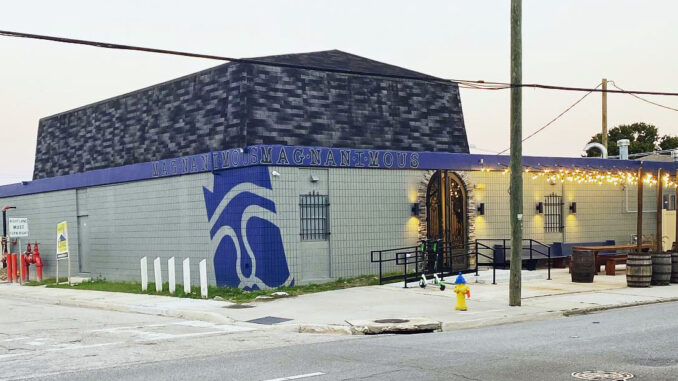
Running a brewhouse efficiently requires more than just knowledge of your brewery’s process; it also means knowing when to adapt to constantly changing demand, maintaining consistency, and finding ways to sustain both people and equipment through the grind.
For Michael Lukacina, Founder and President of Magnanimous Brewing in Tampa, Florida, success comes from staying hands-on and communicative rather than over-engineered.
“We have a very small production staff,” he told Brewer Magazine. “Both managing partners are part of the production team and participate mainly in packaging, production scheduling, ordering, and some cellar work.”
That lean structure forces flexibility, especially during busy seasons or special releases. While larger breweries may scale through automation or temporary staffing, Lukacina relies on shared responsibility and constant communication.
“We all just pitch in and work really hard,” he said. Having good daily verbal communication and a few spreadsheets to help the team stay organized also keeps the brewery on track even as workloads fluctuate.
This hands-on teamwork approach echoes themes found across the industry. Many emphasized that efficient planning from the start sets the tone for long-term workflow success. Having a clear picture of what your space and processes need to accomplish can save countless hours of retrofitting or inefficiency later. Even simple organization tools, from digital tracking systems to consistent team huddles, create cohesion. Lukacina’s approach mirrors that same philosophy, even if executed with fewer formal systems.
Still, there’s a growing movement toward using automation to enhance consistency and reduce human strain.
Industrial Arts Brewing chose to embrace automation out of the gate during the planning and buildout of the New York State brewery, said Brewmaster Mike McManus, especially in the brewhouse.
“The benefits in consistency and labor (both from a Labor/BBL and workflow standpoint) have been hard to ignore,” he told Brewer.
The brewery shared that automation wasn’t about replacing people, but about supporting them. Lukacina, while not heavily automated, recognizes that sustainability in a small team comes from communication and trust. His pragmatic view — that everyone is accountable and informed — serves as his own version of workflow optimization.
When it comes to maintenance, Magnanimous Brewing takes a reactive but transparent approach. “We don’t really have a PM schedule; we should, but we don’t,” Lukacina admitted. “When something isn’t working right, we immediately try to address the issue. Having a good list of service technicians available that you trust and consistently use is key.”
When Matt Kahn first opened Big Ditch Brewing, he was okay with inefficiency, as long as the beer was good. However, over time, he and his staff started figuring out ways to increase efficiency without sacrificing quality.
“It starts with adding staffing and training, and then adding more tank capacity in the form of fermenters and brite tanks,” Kahn said of improving the brewery’s workflow.
As the brewery grew — the Buffalo brewery started with five 40-bbl fermentors and one 40-bbl brite tank and has looked to produce more than when they started — it became about efficiency in brewing and improving yield while reducing turnaround time for each batch, without sacrificing quality. All of these little things helped Big Ditch get the most out of its equipment and space, and ensure it used its time effectively.
Yet, even without a rigid maintenance calendar or advanced systems, Magnanimous still embodies one of the most critical workflow principles: awareness. Lukacina’s team debriefs after issues arise, ensuring shared understanding of causes and solutions.
READ MORE: How Breweries Improve Brewhouse Workflow
“Communication about the issue with the team about why things happen and how to address the issues can help to reduce downtime in the future,” he said.
In the end, the contrast between Magnanimous Brewing’s collaborative grit and the industry’s growing emphasis on structured systems reveals a broader truth: efficiency looks different depending on scale. For Lukacina, the key is ownership … and not just of the product, but of every step that gets it to the glass. His approach may lack automation or predictive systems, but he looks to make up with it by being rich in the fundamentals of craft, which include communication, adaptability, and teamwork.






Be the first to comment